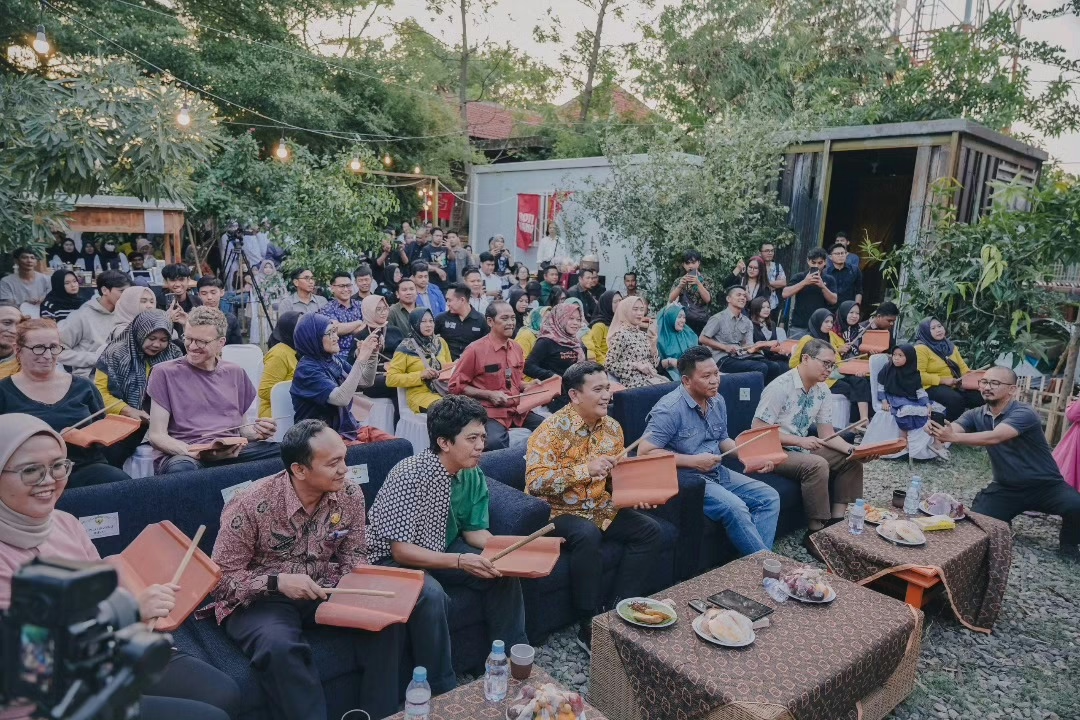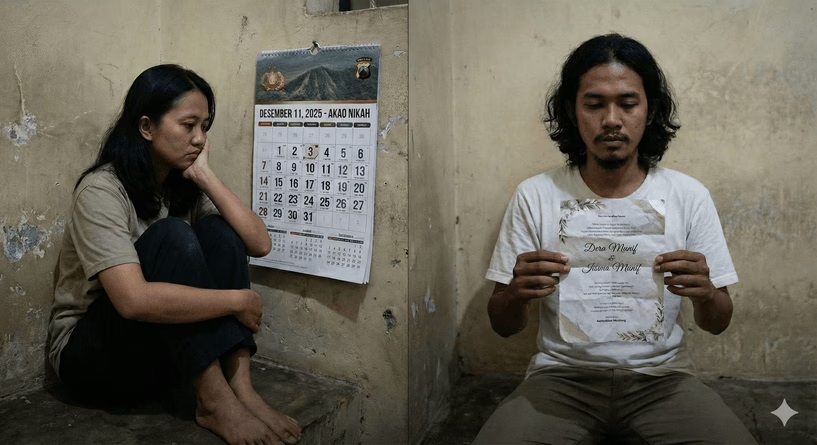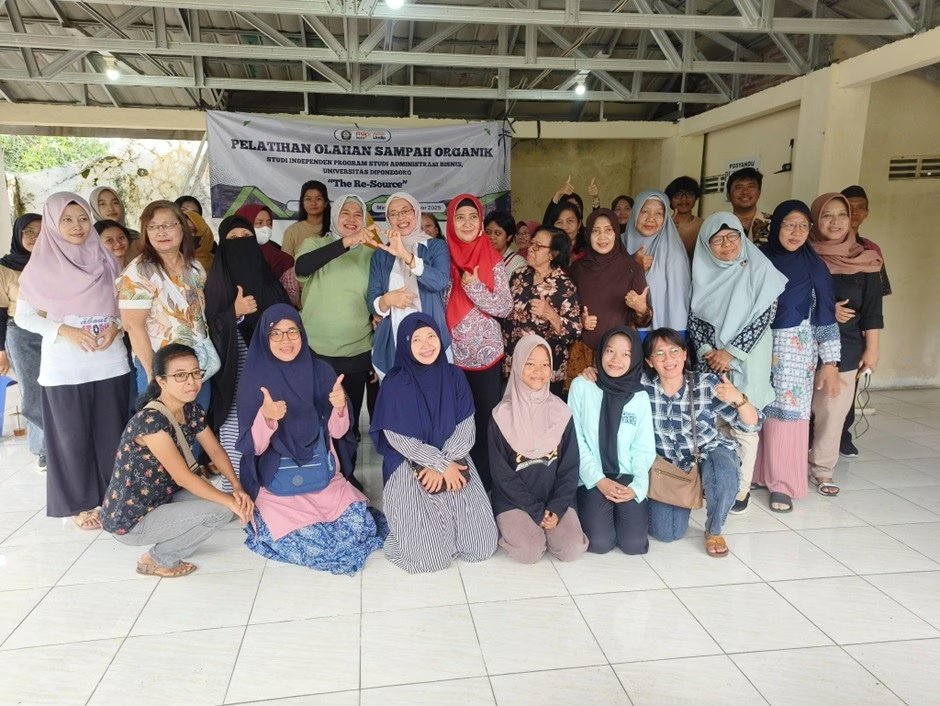Trash in Majalengka poses a complex challenge. With accumulating waste, Jatiwangi is now the biggest contributor of household garbage.
Jatiwangi, a region in Majalengka Regency, West Java, has long been known as a skilled center for clay processing. Since 1905, locals have crafted clay into roof tiles and bricks—a practice that shaped both the physical landscape and the identity and livelihoods of its people. For them, life choices seemed split: become a “jebor” (roof tile factory) owner or work in one.
During the industry’s heyday, Jatiwangi boasted about 600 jebor, each outfitted with 10 hydraulic presses. One press could produce over 2,000 tiles per day, operated by a team of 10 workers. On average, each jebor could generate between IDR 50 million and IDR 100 million per week in revenue, while workers earned around IDR 2.5 million per month—highlighting how central this industry was to the local economy.
However, the global economic turmoil of 1998 brought a nightmare to Jatiwangi. Halted national infrastructure projects and a wave of non-performing loans caused many large jebor to collapse one after another. Although smaller jebor showed better resilience, today only a few remain, operating at a small scale—marking a dramatic shift in the region’s economic landscape.
Amid residents’ confusion amid changing times and the fading tile industry, a collective art initiative called Jatiwangi Art Factory (JAF) emerged in 2005 in Jatisura Village. JAF provides a “pause”—a reflective space for residents through art and culture, enabling them to rethink strategies and imagine their region’s future. In 2012, JAF launched the Festival of the Year of Earth, with Rampak Genteng as the main symbol.
For the community, Rampak Genteng is like Jatiwangi’s Lebaran—a meeting space for residents, artists, and stakeholders to develop ideas rooted in local identity.
Arief Yudi, one of JAF’s founders, explains the philosophy behind their approach: “Art captures and sharpens what exists in daily life. It contributes interpretation and feeling to what we do every day. Then we can be joyful and live longer because we’re not stuck in routine.”
This statement underscores that for JAF, art is more than just entertainment—it is a strategic tool for community empowerment, helping people rediscover joy and meaning in their everyday lives amid change.
But it was also during this period that waves of industrialization began to enter Jatiwangi. Manufacturing industries—ranging from textiles, garments, frozen food, to chemicals—started to dominate. Many jebor were sold to investors and converted into factories, shifting land use. Large infrastructure projects like the Cipali Toll Road and Kertajati Airport further accelerated this industrialization.
During Ridwan Kamil’s administration, the New Metropolitan Economic Corridor Rebana was launched—a national strategic project intended to replace the saturated Karawang–Bekasi–Bandung industrial zone. Jatiwangi was designated as one of 13 new industrial cities in this project. Although the flagship sectors were supposed to be agribusiness and warehousing, the reality has been dominated by textile, garment, shoe, and snack food industries.
Majalengka Regency government has even allocated around 900 hectares as an Industrial Zone.
This economic shift in Jatiwangi is not only a change in livelihood but also a deep identity crisis. Jatiwangi’s strong identity as a clay-processing hub—forming the backbone of its culture and economy—is being overshadowed by the influx of large-scale manufacturing industries and the Rebana Metropolitan project.
This change has sparked a conflict between preserving local heritage and pursuing macro-level economic growth that often disregards social and environmental contexts.
In facing this, Jatiwangi Art Factory has emerged as a catalyst for social transformation. Its emergence amid “citizens’ confusion” after the tile industry crisis shows how art and culture can function as crucial “pauses” and reflective spaces.
JAF uses art to “restore residents’ joy,” proving that art is not just entertainment, but also a strategic tool for community empowerment, conflict resolution, and the creation of collective visions for the future.
JAF’s model can serve as an important case study on how art- and culture-based initiatives can drive community resilience and sustainable development amid pressures of modernization and industrialization—offering a more holistic narrative of development.
When Waste Threatens Local Livelihoods
The rapid industrial growth in northern Majalengka brings serious social and ecological consequences. Statistics from the Central Statistics Agency (BPS) record an increase in the workforce from 651,599 in 2021 to 709,500 in 2024. However, this growth coincides with a sharp decline in environmental quality.
Local residents complain that industrial waste is discharged directly into rivers, vital for irrigation and household water. This directly threatens farmers’ livelihoods and public health. One resident from Ligung, North Majalengka—Carly—expressed concern: “This is clear, the water smells, changes color, and is warm.”
She added that smelly, warm wastewater should not be released into rivers—indicating a violation of waste management standards.
The environmental impact is reinforced by Surya Darma, an advisor to the Majalengka Watershed Care Communication Forum (FKPDAS), who stated: “We deeply regret this pollution. Waste spilling onto residents’ paddy fields not only damages the land, but also rots the rice. Residents also complain of itchy skin from waste exposure.”
In response, company HRD Ifan claims their waste management is “according to procedures.” He explained that treated wastewater is discharged, and the warm, smelly water observed may be from leakage—not direct disposal. This claim reveals a possible gap between practice and compliance, often a loophole for harmful environmental practices.
Moreover, WALHI (Indonesian Forum for the Environment) West Java found indications of extensive zoning markup for the Priority Industrial Zone (KIP) that does not align with the official Spatial Planning (RTRW). This opens the potential for inter-regional land-use conflicts within the Rebana zone, potentially worsening environmental challenges.
Rebana’s Metropolitan development action plan, regulated under West Java Governor Regulations 84/2020 and 32/2023, does mention “Water procurement, Waste management, and Recycling” as sectors. However, these documents lack detailed action plans for industrial waste management.
This suggests that policy focus leans more toward economic and infrastructure aspects than comprehensive environmental impact mitigation.
Jatiwangi reflects a classic dilemma of economic development versus environmental quality found in many developing countries. The increasing workforce—an indicator of economic growth through industrialization—is explicitly linked with environmental degradation. Industrial waste being dumped into rivers—a vital resource for communities—shows how economic growth often sacrifices environmental sustainability and local well-being.
Without strict regulation, oversight, and effective law enforcement, industrial growth within Metropolitan Rebana will continue to impose disproportionate ecological burdens on local communities, undermining their natural and social capital. This underscores failures in integrating sustainable development principles thoroughly.
Additionally, there is a stark gap between environmental policy and implementation. Despite company claims of compliance and the existence of a Rebana management body, WALHI West Java’s findings on spatial planning discrepancies and residents’ complaints about waste demonstrate a disconnect between policy frameworks and reality. The Rebana documents’ vague details on industrial waste management further highlight this issue.
This gap creates a “gray zone” where harmful practices can continue unchecked. The situation calls for greater transparency, stronger community participation in oversight, and stricter enforcement to ensure industrial development does not irreparably damage the environment.
Waste Management in Jatiwangi
Waste issues in Majalengka, including Jatiwangi, are complex. Garbage piles across Majalengka continue to grow, with Jatiwangi contributing the most household waste. This indicates the problem stems not only from industrial activity, but also increased domestic usage tied to population and economic growth.
Majalengka’s Environmental Department (DLH) tracks the number of waste processing facilities by district, updated annually—showing monitoring efforts.
Still, waste management in Majalengka remains far from expectations outlined in Law No. 18 of 2008 on Waste Management and Government Regulation No. 81 of 2012 regarding household and similar waste management. This covers both waste reduction (like the 3Rs: Reduce, Reuse, Recycle) and waste handling—sorting, collection, transport, treatment, and final disposal.
The Regent of Majalengka emphasized the urgency of designing a better waste management system, starting from Jatitujuh, with clear facilities for proper waste disposal.
Despite this, promising community initiatives exist. In Majalengka Kulon Subdistrict, there’s a 3R (Reduce-Reuse-Recycle) Waste Processing Site (TPS 3R), granted by the central government to the Damar Village Community Institution (LKM). LPM Majalengka Kulon and LKM Damar initiated the “Exploring the Household Waste Governance Ecosystem” pilot project.
The program focuses on 3R education for residents and explores waste utilization at the TPS 3R. Organic waste is processed by cultivating maggots (Black Soldier Fly larvae) and making organic fertilizer, with leftover maggot media and fertilizer used as planting media.
The “Maggot House” innovation—already successful in Bandung—shows immense potential in efficiently processing organic waste, reducing landfill volume, and creating economic benefits like high-quality animal feed. Such programs could align with local food resilience initiatives.
Waste banks also play a notable role. The Majalengka Environmental Department says waste banks have effectively reduced landfill volumes. One program supported by PT Pegadaian allows residents to exchange waste for gold. This initiative not only helps the environment but also bolsters local livelihoods.
Still, the challenge of reducing plastic waste remains significant. A pilot in Taiwan’s Ningxia Night Market aims to cut plastic waste by 20% by 2026. Similar targeted initiatives could be applied in Jatiwangi to tackle this issue.
Community Waste Management Initiatives in Majalengka (Focus: Jatiwangi)
| Initiative / Program | Location (Focus) | Type of Waste Handled | Management Method | Benefits (Environmental / Economic) | Status / Note |
|---|---|---|---|---|---|
| “Exploring the Household Waste Governance Ecosystem” | Majalengka Kulon Subdistrict | Organic & Inorganic | 3R education, maggot cultivation, organic fertilizer production | Reduces waste piles; creates fertilizer & animal feed; potential new ventures | Pilot project; exploring mushroom cultivation from organic waste |
| Waste Bank run by PT Pegadaian | Majalengka Regency | Various (convertible) | Waste deposit exchange for gold | Reduces landfill volume; supports local economy | Effective in reducing waste |
Despite initiatives like TPS 3R and waste banks, acknowledgments that waste management is “far from expectations” and the Regent’s call to “design a better system” indicate that the core issues lie not just in lacking initiatives, but also in the absence of structured systems, adequate infrastructure, and optimal public awareness and participation in correct sorting and disposal.
Solutions for Jatiwangi’s waste management must be holistic—not just focused on technology or facilities, but also on behavioral change, continuous education, and incentives that encourage active participation. Collaboration among local government, communities, and the private sector is key to overcoming this challenge.
Moreover, innovations like maggot cultivation and organic fertilizer production from waste show significant potential for a circular economy. Waste—especially organic—can be transformed into high-value resources like animal feed and fertilizer. Expanding such initiatives in Jatiwangi could not only reduce waste volume but also create new business opportunities, enhance local food resilience, and deliver added economic value to the community.
This is a tangible example of how environmental issues can be turned into sustainable development opportunities—resonating with the vision of a “Terracotta City” that is locally sovereign. [Prabowo Setyadi]
The report was produced by Ekuatorial.com in collaboration with Earth Journalism Network – Internews, and was first published on Kapol.ID.
- Testing the Power of Indonesia’s Anti-SLAPP laws in the case of activists Munif and Dera
- From Waste to Blessing: Gayamsari Residents Turn Organic Waste into New Resources
- The Story of Maluku’s Jambula Mamas and Their Fight for a Living Coastline
- Jatiwangi in the Shadow of Industry and the Dream of an Environmentally Sovereign Terracotta
- How is the development of the equitable energy transition program in Indonesia?
- Samirono village energy transformation, from waste to clean energy



